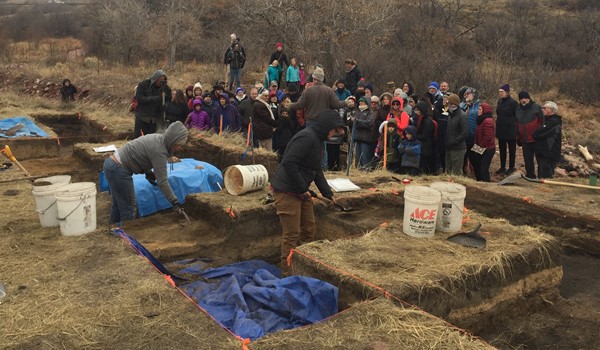There is a saying “One man’s trash is another’s treasure.” In Colorado Springs that literally became the case, and it resulted in an award from History Colorado. A trash pit used by city founder Gen. William Jackson Palmer was found and archaeological digs at the site unearthed artifacts that helped shed some light on Colorado Springs early history and the Palmer family. The teamwork that led to this project was honored with the State Archaeologist’s Award as part of the Stephen H. Hart awards.
FEMA’s involvement in this story starts with flooding that occurred along Camp Creek in 2015. Following the Waldo Canyon Fire, the area below the burn scar became more susceptible to flooding. The City of Colorado Springs sought to take actions to mitigate that flood threat. A project to build a retention pond was approved under FEMA’s Hazard Mitigation Grant program.
FEMA’s Environment and Historic Preservation (EHP) team is tasked with ensuring that regulations are followed for any federal funded disaster response or recovery project. As part of the review for the retention pond project, the EHP team identified the site of with potential historic value that would be flooded out and inaccessible when the pond was completed. To address this loss, an archaeological dig was approved for the area before construction on the mitigation project could begin.
The site proved a fertile ground, with more than 67,000 objects tied to General Palmer’s family found. These items were turned over to a local museum and are available for the public to see and enjoy. Following the archaeological study, work on the retention pond was completed, lessening the flood risk to downstream residents. The completion of the both the dig and the mitigation project show how teamwork can balance both public safety needs and preservation of important cultural and historic artifacts.
Learn More
- FEMA Environmental and Historic Preservation – Overview of FEMA EHP’s role in disaster operations
- FEMA Hazard Mitigation Grant Program – Explanation of FEMA’s post-disaster mitigation grant program
- FEMA is 'Digging the History' in Colorado Springs – Previous story about the dig itself
- Palmer Trash Discovery – History Colorado video highlighting the study



